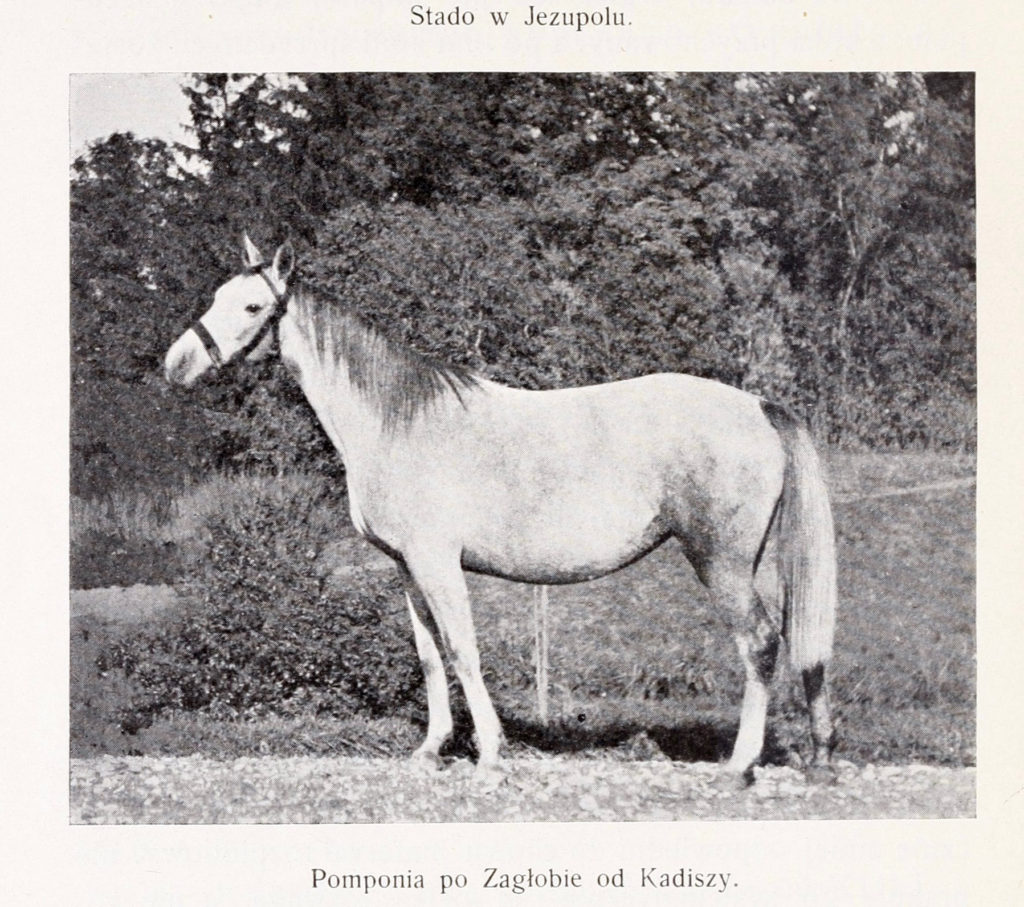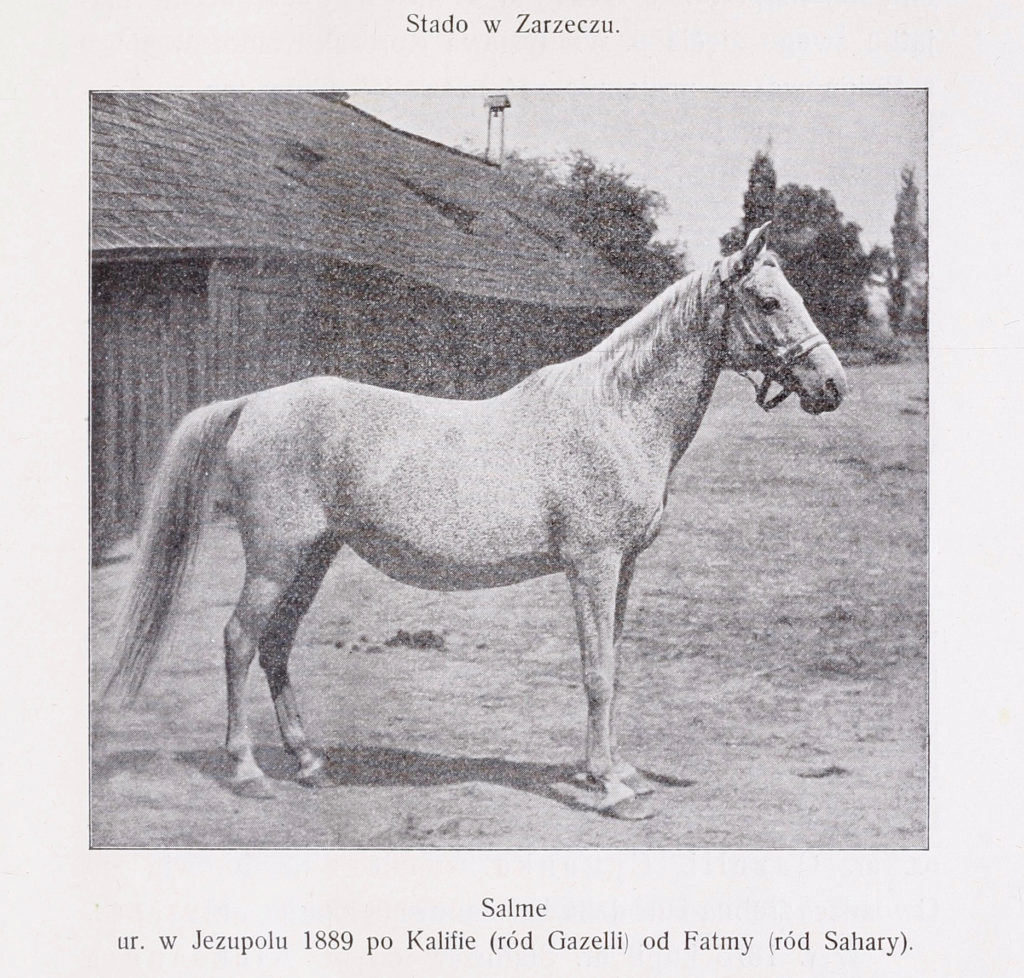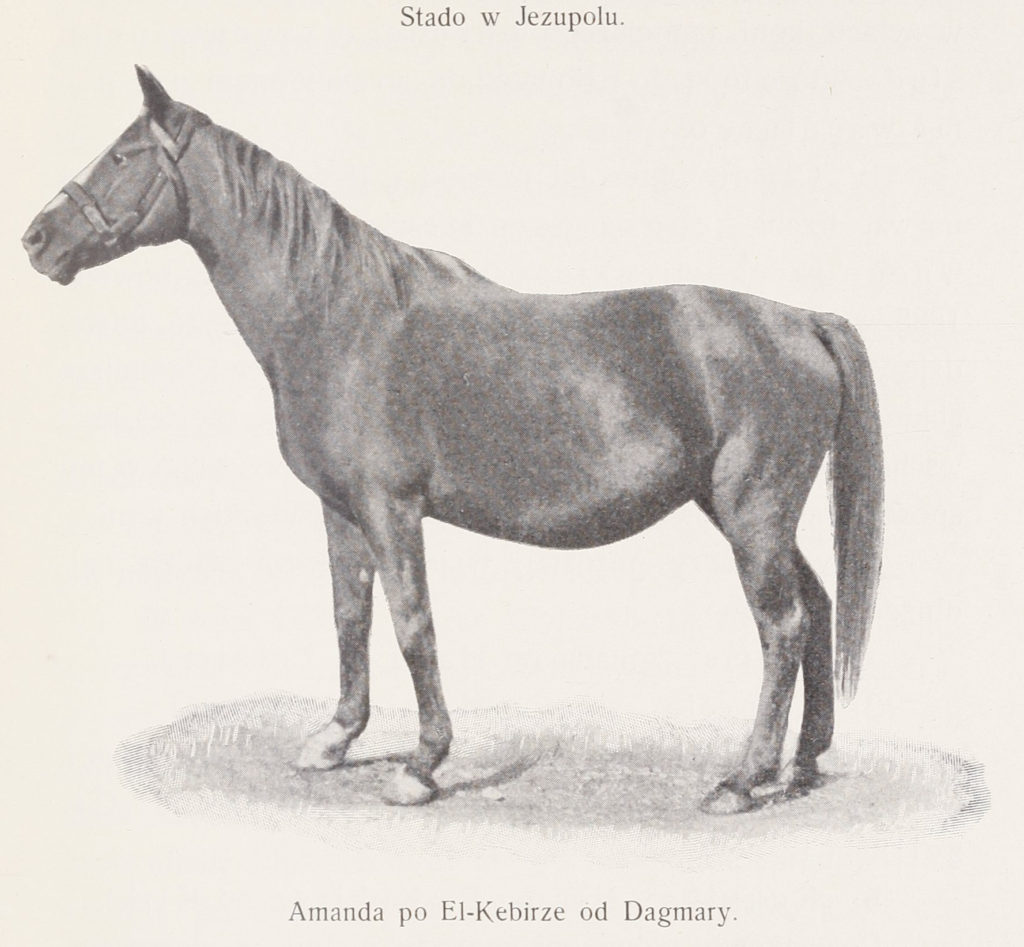Two Polish mares descended from Sahara OA
Below are photos of Pomponia (Zagloba x Kadisza) and Salme (Kalif x Fatma). Both trace in the tail female to Juliusz Dzieduszycki’s imported Kuhaylah Moradiyah mare Sahara; Salme is actually the full sister to Pomponia’s dam.
Pictures from Stefan Bojanowski’s Sylwetki koni orientalnych i ich hodowców.


Pomponia produced three daughters, Bona, Dora, and Zulejma. Bona’s daughter Babolna, and Dora’s daughter Nora, were imported to the United States by J. M. Dickinson in 1935. Another of Dora’s daughters, Krucica, was the dam of Mammona, the Queen of Tersk; the pair made the long trek from Janów Podlaski to Tersk in 1939, when Mammona was a foal at her dam’s side.
The eldest of Pomponia’s daughters, Zulejma, foaled in 1914, was by the imported desertbred stallion Kohejlan, also the sire of Gazella II and Mlecha. Among the handful of Polish horses who survived the First World War, Zulejma went to Janów Podlaski as a six-year-old, and produced a series of daughters, among them some of the last asil mares of old Polish breeding, such as Lassa (another of J. M. Dickinson’s imports, and the dam of Latif), Kahira (dam of the Polish racehorse Trypolis), and Dziwa (dam of Ofir).
Fatma, the dam of Salme and granddam of Pomponia, was by the desertbred stallion Hami, who had been bred by the Ruwalah, and who had been used at both Bábolna and Mezohegyes before Dzieduszycki purchased him in 1864. Her own dam, another Zulejma, was the daughter of Sahara Slepka, the filly that Sahara foaled on her way to Galicia from Arabia. Salme is just four generations from Sahara, and Pomponia five.
By way of a bonus, here is Amanda, the dam of Pomponia’s sire Zagloba. Her sire, El Kebir, is another Kuhaylan Moradi, tracing to Sahara via her daughter Sahara II, while Amanda is a Kuhaylah Da’janiyah, tail female to Mlecha. The cropping is not very flattering, but it still gives some sense of what Amanda looked like.

Thank you, Kate! I love reading about and seeing the old European asil lines!
Couplings that you could die for!
best
Bruce Peek
I’m glad you both like them! It’s so exciting every time I come across another book with photos of the old European horses. I’m on the lookout at the moment for the book by Counts Shcherbatov and Stroganov, Kniga ob Arabskoi Loshadi, as it has some very lovely plates of Russian/Polish Arabians, if the few pictures I’ve seen online are anything to go by.
Fascinating, many thanks to Kate for posting. Look forward to more when you find them.